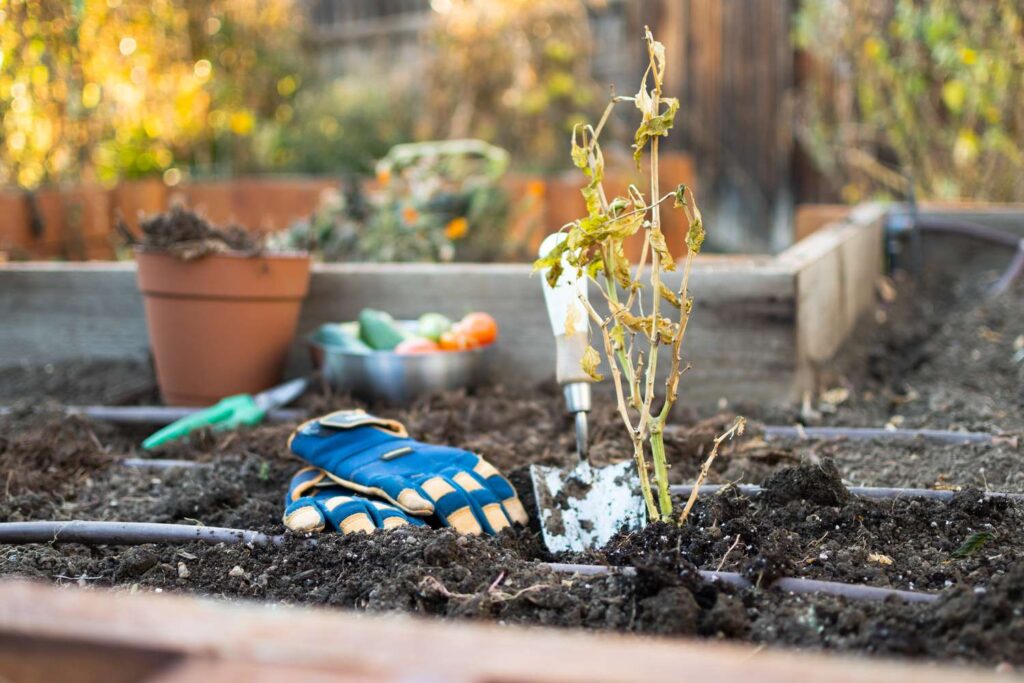Winter is a difficult time for gardeners. The plants are dormant. There is usually little sunlight, and the cold weather can be harsh. But with some care, you can keep your garden healthy through the winter months. Here are some tips on how to care for your garden during the cold season.
Remove Any Dead Plants or Debris
Removing dead plants and debris is essential to garden care during winter. Removing them can help to keep your garden healthy and looking its best. It’s crucial to remove any dead or diseased plant material as soon as possible to prevent the spread of disease to other plants in the garden.
When removing dead plants or debris, make sure to be gentle and avoid damaging any healthy plants. Use tools such as pruners, shears, and rakes to remove dead material and discard it in a compost bin.
Add Mulch to Protect the Soil From Freezing and Thawing
Adding mulch to your garden in the winter is essential for protecting the soil from freezing and thawing. Mulch helps to insulate the ground, preventing it from getting too cold or too warm. It also helps prevent water from evaporating quickly and provides a protective layer to hold moisture in the soil.
Mulch can help plants stay healthy and hydrated through the winter months. When adding mulch, remember to spread it evenly over the soil surface so it is not too thick or thin in any area.
Avoid Overwatering Your Plants
Watering your plants is vital in the winter months, as it helps to keep them healthy and hydrated. However, overwatering your plants is discouraged, as this can lead to root rot and other problems.
When watering during the winter months, ensure that you give plants enough water to keep them moist but not soaking wet. You should also be sure to water in the early morning or late evening when temperatures are cooler, as this will help prevent the water from evaporating too quickly.
You can also install a drip irrigation system or use mulch to help keep moisture levels consistent and avoid overwatering. Avoid walking through beds of wet soil, as this can compact the ground and make it difficult for roots to grow. Lastly, check your plants regularly for signs of overwatering, such as yellowing leaves or stunted growth.

Fertilize Lightly in the Winter Months
Fertilizing your plants in the winter months is essential, as it helps replenish the soil’s nutrients. But it’s best to use a light fertilizer with low levels of nitrogen and phosphorus, as excessive amounts can damage your plants. Instead, use potassium for winter hardiness and overall disease resistance.
Applying too much fertilizer will also cause the soil to become overly acidic, harming some plants. Always remember the general rule of thumb, less is more.
When fertilizing, make sure to apply it evenly around your plants and avoid getting fertilizer on their leaves. It’s also crucial to water the soil after applying fertilizer and wait a few days before planting any new plants in the garden.
Monitor the Temperature and Weather Conditions in Your Area
Monitoring your area’s temperature and weather conditions during winter is important. It can help you prepare for any potential frost or snow that may occur and ensure you are taking the proper steps to protect your plants.
Make sure to check the forecast regularly and be prepared with supplies such as tarps, straw blankets, or winter protection covers. Taking the necessary precautions can help keep your garden safe and healthy during the cold months.
Protect Your Plants From Frost and Snow
When temperatures drop, take the necessary steps to protect your plants from frost and snow. Covering them with a tarp or straw blanket during the winter months can provide an extra layer of protection and help keep plants safe from harsh winter weather.
You can also move potted plants indoors or to a sheltered garden area to provide extra protection from frost and snow.
When it comes to more delicate plants, such as annuals or tropical varieties, make sure to take them indoors during the colder months. It will help protect them from any potential damage from frost or snow and can help to extend their lifespan.
Plant Winter-Friendly Flowers and Plants
Planting winter-friendly flowers and plants is a great way to bring some life and color into your garden during the colder months. Look for hardy varieties to withstand cooler temperatures, such as pansies, primroses, cyclamen, or hellebores. These plants will provide blooms throughout the winter and can help brighten your garden when everything else may look a bit bleak.
You can also plant evergreens such as holly or conifers to provide some greenery during the winter. These plants can withstand cold temperatures and provide a lush backdrop for other plants that may not be so hardy in the winter.
Enjoy the Beauty of a Winter Garden
Although there’s a lot of work to do, taking these necessary steps to protect your plants during the winter is well worth it. By planting winter-friendly flowers and plants, you can brighten your garden and enjoy its beauty even when temperatures are low.
Likewise, monitoring your area’s temperature and weather conditions can help ensure that your plants stay healthy and safe throughout the winter. So get ready for cooler temperatures and snowfall, and take these precautions to keep your garden looking beautiful all season long!





